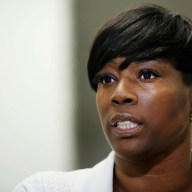OTTAWA – The Conservative government is flying reporters to Canada and beefing up its presence on the international trade-show circuit, but Trade Minister Stockwell Day wants more bucks to stimulate flagging foreign investment.
Day is pushing his cabinet colleagues for a larger chunk of the $50 million the government sets aside annually in the budget under the Global Commerce Strategy.
Internal and external critics, including some of the provinces, have bemoaned Canada’s weak or outdated image abroad.
“We are getting the cue from people outside the country who are saying that Canada should market itself more and get the message out about what a good place this country is in which to work and invest and to live,” Day said in an interview.
Some of the components of a larger visibility push are already in place.
The Department of Foreign Affairs and International Trade has been bringing groups of foreign journalists to Canada, paying for their flights, accommodations and giving them a daily allowance.
While they’re here, the reporters get special access to high-profile figures such as Day, Finance Minister Jim Flaherty, Bank of Canada governor Mark Carney and the heads of the major banks.
The media coverage pays off in spades, says Day.
One recent junket produced positive coverage in France’s Le Figaro and Belgium’s De Tijd, with headlines like, “Canadian Lessons for Belgium,” or “The Canadian banking sector brags it’s one of the most solid in the world.”
“You’re not buying the ads, you’re subject to an array of questions from a reporter, which is fair game,” said Day. “But we think we’ve got a fair message that stands up to those investigative questions.”
The department is also using the 2010 Vancouver Olympics to increase interest in Canada, hoping that it stimulates further curiosity about the country with potential investors.
Day notes that Australia put on an aggressive marketing push around its 2000 Summer Games in Sydney to bring in new money.
“People take a look around and they like what they see,” Day said. “We’re going to be right there to show to them that further exploration into what Canada has to offer might be something that’s well worth while.”
Other components of the investment strategy include buying advertising in international trade publications and spending more money on the Canadian presence at trade shows, pavilions and conferences.
The government is actively quoting international rating agencies and organizations that have lauded Canada’s banking and taxation regime.
Paul Lavoie, the co-founder of advertising heavyweight Taxi, says such initiatives are good tactically, but need to be backed up by a much more comprehensive branding exercise.
Lavoie would like to see the prime minister appoint a high-level, private-sector task force to examine Canada’s image and how to market it properly on the international stage.
Foreign Affairs, Canadian Heritage, Agriculture Canada and other departments all fund activities overseas, but have no integrated approach or marketing strategy.
The provinces also have their own trade promoters and work independently of the federal government.
“We need to create the kind of imagery or reputation that lives up to our ambitions today, and lives up to a much more modern and contemporary view of what Canada is,” said Lavoie, whose company does campaigns for Telus, Canadian Tire and BMW’s Mini Cooper.
“If we don’t do this, other people jump in and create the impressions which are often default impressions, and can be simplified things like mounted police and beavers and Beaver Tails.
















